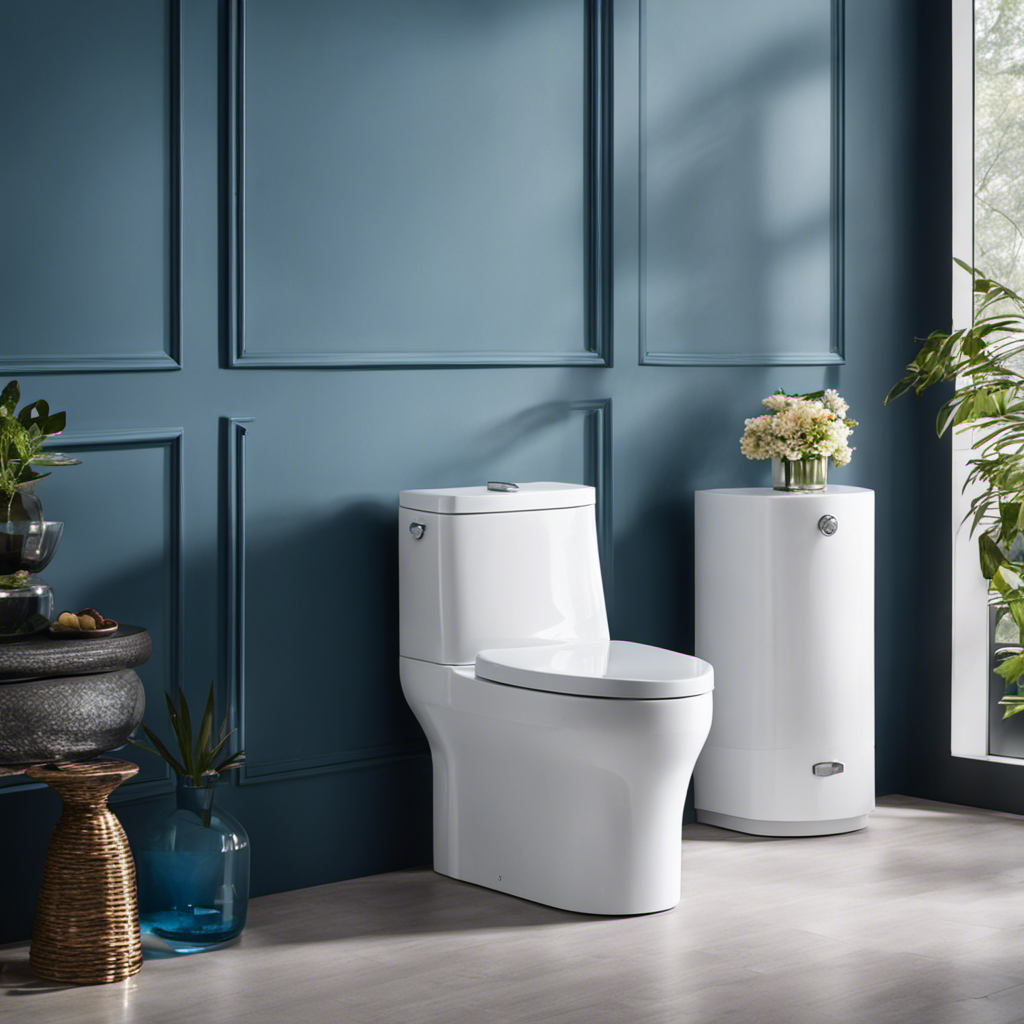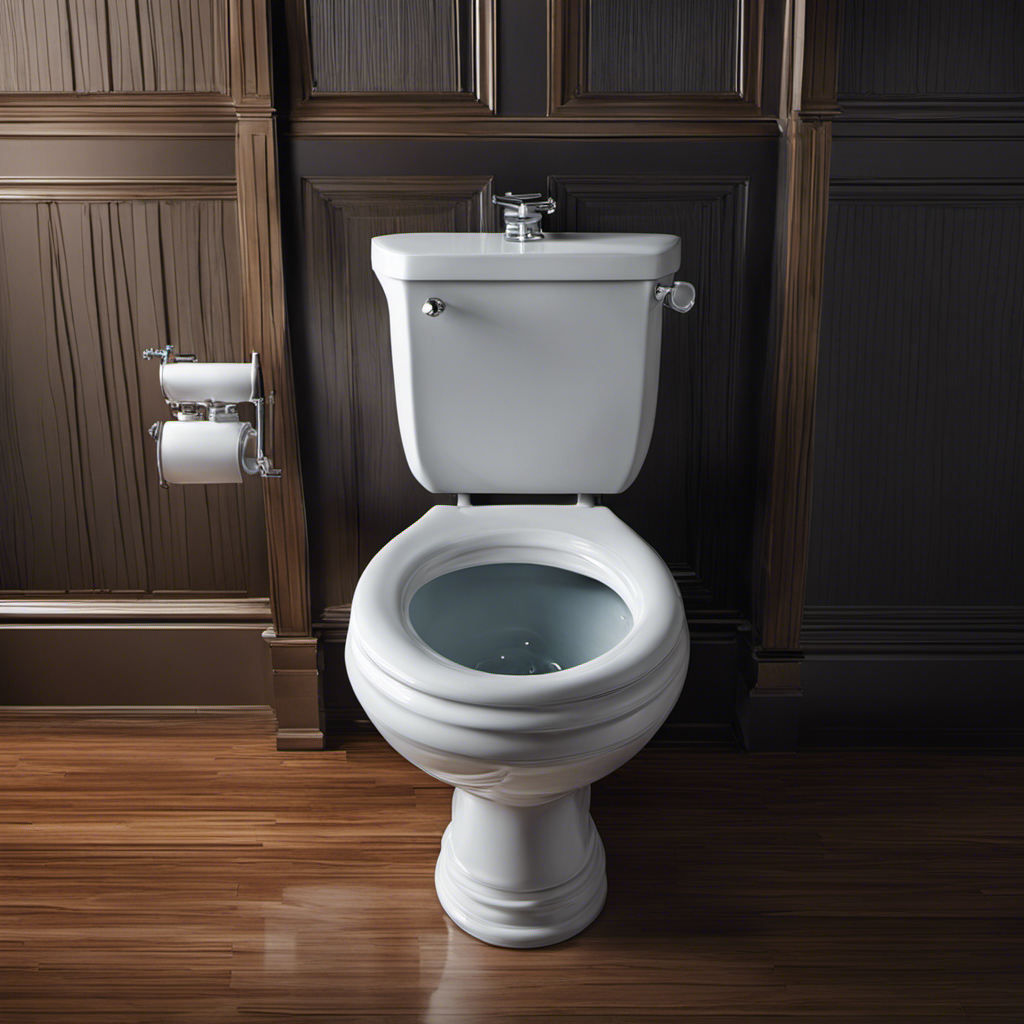As I embarked on the journey of replacing a toilet in my own bathroom, I quickly realized that there was more to this task than meets the eye. The process of selecting the right toilet, gathering the necessary tools and materials, and then actually removing and installing the new fixture requires careful consideration and expertise.
In this article, I will share my firsthand knowledge and experience, offering you a comprehensive guide on what to know when replacing a toilet.
Key Takeaways
- Cracks in the porcelain, frequent clogs, unfixable leaks, and high water consumption are common reasons for toilet replacement.
- When choosing a toilet, consider its size, style, and water efficiency. Look for a range of toilet styles and check for the WaterSense label.
- Essential tools and materials for toilet replacement include an adjustable wrench, putty knife, wax ring, and a new toilet. Avoid installation mistakes.
- To remove the old toilet, turn off the water supply, flush and drain the toilet, loosen and remove nuts on toilet bolts, and lift and dispose of the old toilet.
Understanding the Toilet Replacement Process
Replacing a toilet can be a straightforward process if you have the right tools and follow the proper steps. Understanding the toilet replacement process is essential to ensure a successful installation.
Before starting, it’s important to address common toilet problems that may require a replacement. Cracks in the porcelain, frequent clogs, or leaks that cannot be fixed with simple repairs are common issues that may necessitate a new toilet. Additionally, outdated toilets that consume excessive water can lead to high water bills.
When considering toilet replacement costs, it’s crucial to factor in the initial investment along with potential long-term savings on water bills. By understanding the common problems and costs associated with toilet replacement, you can make an informed decision and successfully replace your toilet.
Choosing the Right Toilet for Your Bathroom
When deciding on the best toilet for your bathroom, it’s important to consider factors such as size, style, and water efficiency.
Toilet styles vary greatly, from traditional two-piece toilets to sleek and modern one-piece designs. The size of the toilet is crucial, as it needs to fit comfortably in your bathroom space. Measure the rough-in, which is the distance between the wall and the center of the toilet flange, to ensure a proper fit.
Another important factor is water efficiency. Look for toilets with a WaterSense label, which indicates that they meet strict water-saving standards. These toilets use less water per flush, helping you save both money and the environment.
Considering both style and water efficiency will ensure you choose the perfect toilet for your bathroom.
Essential Tools and Materials for Replacing a Toilet
To successfully replace a toilet, you’ll need a few essential tools and materials. Here are the items you’ll need:
-
Adjustable wrench: This tool will come in handy for loosening and tightening the nuts and bolts that hold the toilet in place.
-
Putty knife: You’ll need this to remove the old wax ring and any leftover adhesive from the flange.
-
Wax ring: This is a crucial component that creates a watertight seal between the toilet and the floor.
In addition to these tools, you’ll also need a new toilet, which can range in price depending on the brand and features you choose. When replacing a toilet, it’s important to avoid common installation mistakes such as improper wax ring placement or overtightening the nuts and bolts.
Now that you have the necessary tools and materials, let’s move on to the step-by-step guide for removing the old toilet.
Step-by-Step Guide to Removing the Old Toilet
Now that you’ve gathered the necessary tools and materials, let’s dive into the step-by-step guide for removing the old toilet.
First, locate the water supply valve behind the toilet and turn it off. Flush the toilet to drain the remaining water from the tank and bowl.
Next, use a wrench to loosen and remove the nuts on the toilet bolts securing the base to the floor. Once the bolts are removed, carefully lift the toilet straight up and off the floor. Be cautious as it can be heavy.
Place the old toilet on a tarp or garbage bags to protect the floor. Finally, dispose of the old toilet following your local regulations for waste management.
With the old toilet removed, we can now move on to installing and sealing the new toilet properly.
Installing and Sealing the New Toilet Properly
Once you’ve gathered the necessary materials, it’s time to start installing and sealing the new toilet properly. Here are the steps to ensure a successful installation and troubleshoot common issues:
-
Position the toilet: Place the wax ring on the flange and carefully lower the toilet bowl onto it, ensuring proper alignment with the mounting bolts.
-
Secure the toilet: Tighten the nuts on the mounting bolts, alternating between them to ensure even pressure. Be careful not to overtighten, as it can crack the toilet bowl.
-
Seal the base: Apply a bead of silicone caulk around the base of the toilet to create a watertight seal. Smooth the caulk with a caulk tool or your finger for a clean finish.
Troubleshooting common issues:
-
If the toilet wobbles, check the levelness of the floor and adjust as needed.
-
If there is a leak, check the wax ring and tighten the mounting bolts if necessary.
-
If the toilet doesn’t flush properly, adjust the water level in the tank or check the flapper valve.
Frequently Asked Questions
How Do I Know if My Bathroom Floor Can Support the Weight of a New Toilet?
When replacing a toilet, it’s crucial to consider your bathroom floor stability and weight capacity. To determine if your floor can support the new toilet, consult a professional or assess any visible signs of damage or weakness.
Are There Any Specific Building Codes or Regulations I Need to Be Aware of When Replacing a Toilet?
When replacing a toilet, it’s important to be aware of building code requirements and toilet installation guidelines. For example, in my experience, I had to ensure the distance between the toilet and the wall met the code.
Can I Reuse the Wax Ring From My Old Toilet When Installing a New One?
Yes, you can reuse the wax ring from your old toilet when installing a new one. However, it is recommended to use a new wax ring for a better seal. There are alternative sealing options available as well.
What Should I Do if I Encounter Any Plumbing Issues or Leaks During the Toilet Replacement Process?
If I encounter any plumbing issues or leaks during the toilet replacement process, I would make sure to troubleshoot the plumbing problem first. I would also take preventive measures to avoid any future leaks by properly installing the new toilet.
Are There Any Additional Steps or Precautions I Should Take When Replacing a Toilet in a Multi-Story Building?
When replacing a toilet in a multi-story building, there are additional steps and precautions to take. Ensure proper shut off of water supply, protect floors from damage, and consider hiring a professional for complex installations.
Conclusion
In conclusion, replacing a toilet may seem daunting, but with the right knowledge and tools, it can be a smooth and rewarding process.
Just like a well-functioning toilet, a successful replacement requires careful planning and attention to detail.
Remember, every step counts towards achieving a bathroom that is not only functional but also aesthetically pleasing.
So, don’t be afraid to dive in and tackle this project head-on. Trust me, you’ll feel a sense of satisfaction and accomplishment when you flush away any worries and enjoy your brand new toilet.










